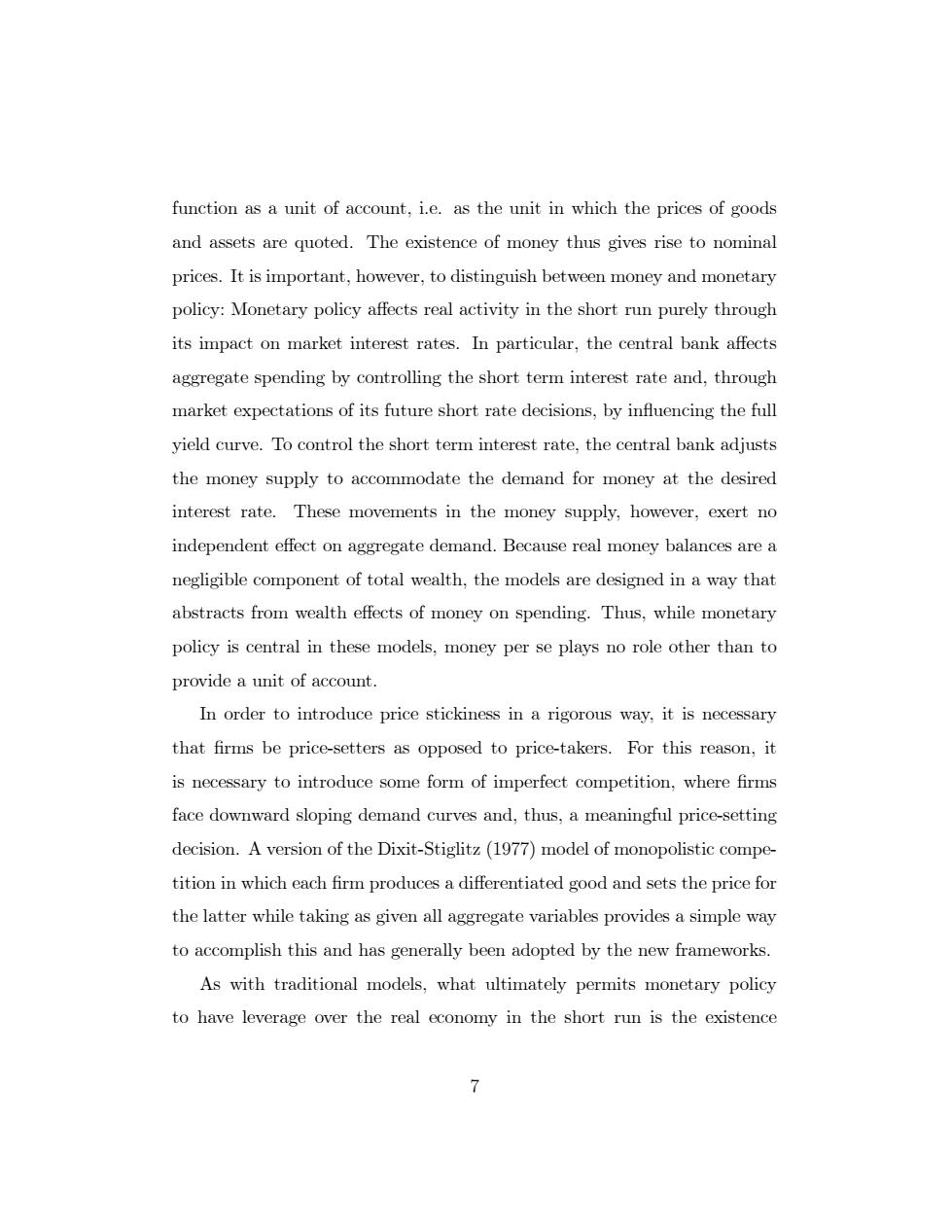正在加载图片...

function as a unit of account,i.e.as the unit in which the prices of goods and assets are quoted.The existence of money thus gives rise to nominal prices.It is important,however,to distinguish between money and monetary policy:Monetary policy affects real activity in the short run purely through its impact on market interest rates.In particular,the central bank affects aggregate spending by controlling the short term interest rate and,through market expectations of its future short rate decisions,by influencing the full yield curve.To control the short term interest rate,the central bank adjusts the money supply to accommodate the demand for money at the desired interest rate.These movements in the money supply,however,exert no independent effect on aggregate demand.Because real money balances are a negligible component of total wealth,the models are designed in a way that abstracts from wealth effects of money on spending.Thus,while monetary policy is central in these models,money per se plays no role other than to provide a unit of account. In order to introduce price stickiness in a rigorous way,it is necessary that firms be price-setters as opposed to price-takers.For this reason,it is necessary to introduce some form of imperfect competition,where firms face downward sloping demand curves and,thus,a meaningful price-setting decision.A version of the Dixit-Stiglitz(1977)model of monopolistic compe- tition in which each firm produces a differentiated good and sets the price for the latter while taking as given all aggregate variables provides a simple way to accomplish this and has generally been adopted by the new frameworks. As with traditional models,what ultimately permits monetary policy to have leverage over the real economy in the short run is the existence 7function as a unit of account, i.e. as the unit in which the prices of goods and assets are quoted. The existence of money thus gives rise to nominal prices. It is important, however, to distinguish between money and monetary policy: Monetary policy a§ects real activity in the short run purely through its impact on market interest rates. In particular, the central bank a§ects aggregate spending by controlling the short term interest rate and, through market expectations of its future short rate decisions, by ináuencing the full yield curve. To control the short term interest rate, the central bank adjusts the money supply to accommodate the demand for money at the desired interest rate. These movements in the money supply, however, exert no independent e§ect on aggregate demand. Because real money balances are a negligible component of total wealth, the models are designed in a way that abstracts from wealth e§ects of money on spending. Thus, while monetary policy is central in these models, money per se plays no role other than to provide a unit of account. In order to introduce price stickiness in a rigorous way, it is necessary that Örms be price-setters as opposed to price-takers. For this reason, it is necessary to introduce some form of imperfect competition, where Örms face downward sloping demand curves and, thus, a meaningful price-setting decision. A version of the Dixit-Stiglitz (1977) model of monopolistic competition in which each Örm produces a di§erentiated good and sets the price for the latter while taking as given all aggregate variables provides a simple way to accomplish this and has generally been adopted by the new frameworks. As with traditional models, what ultimately permits monetary policy to have leverage over the real economy in the short run is the existence 7